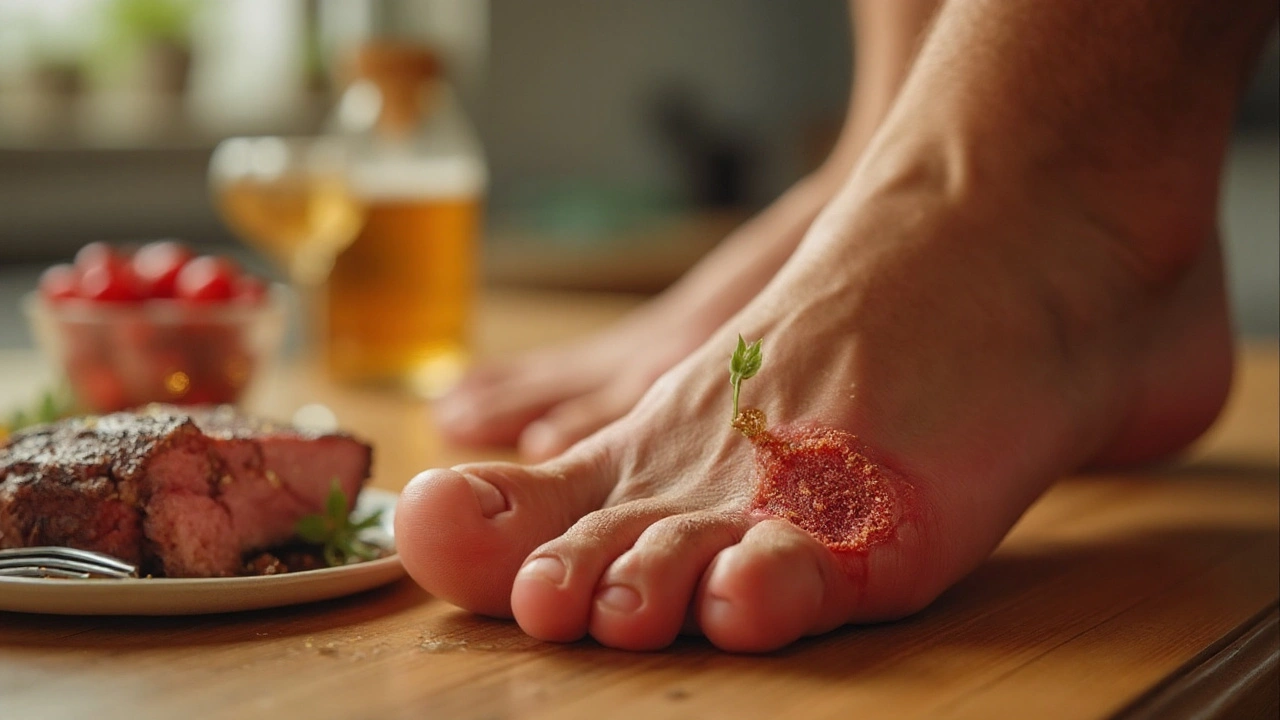Gout: What It Is and How to Manage It
When talking about gout, a form of inflammatory arthritis caused by excess uric acid crystals in joints. Also known as uric acid arthritis, it often shows up as sudden, intense joint pain. Understanding gout starts with the chemistry behind it: uric acid, a waste product from breaking down purines, can accumulate when the kidneys don’t filter it well. The buildup creates sharp crystals that trigger the inflammation you feel during an attack.
Why Hyperuricemia Leads to Gout Attacks
Hyperuricemia, the medical term for high uric acid levels in the blood, is the main driver of gout. Not everyone with hyperuricemia gets gout, but the risk jumps dramatically when crystal formation occurs in the joint space. Lifestyle factors like sugary drinks, red meat, and alcohol raise purine intake, pushing uric acid higher. Genetics also play a role—some people inherit kidneys that clear uric acid less efficiently. Recognizing hyperuricemia early lets you take steps before the first painful flare‑up hits.
When gout does flare, the pain often targets the big toe, but it can strike the ankle, knee, or wrist. The swelling, redness, and warmth are classic signs of an acute attack. If left untreated, repeated attacks can lead to tophi, visible nodules of urate crystals under the skin. Tophi not only look unsightly, they can erode bone and cause chronic joint damage. Spotting these early and managing uric acid levels can prevent long‑term complications.
Effective gout management hinges on two fronts: medication and lifestyle. Allopurinol, a xanthine oxidase inhibitor, lowers uric acid production and is the go‑to drug for long‑term control. For breakthrough attacks, doctors may prescribe colchicine or NSAIDs to tame inflammation fast. Knowing which drug fits your health profile matters—some patients need dose adjustments if they have kidney issues, while others might benefit from newer agents like febuxostat.
Diet changes are the other half of the equation. Cutting back on purine‑rich foods—organ meats, anchovies, shrimp—helps keep uric acid in check. Staying hydrated dilutes urine, making it easier for kidneys to excrete urate. Limiting alcohol, especially beer, reduces both purine intake and the liver’s production of uric acid. Small, consistent tweaks in daily eating habits often make a bigger difference than occasional extreme diets.
Putting all these pieces together gives you a clear roadmap: identify hyperuricemia early, use appropriate medication like allopurinol for prevention, treat attacks promptly, and adjust diet to reduce purine load. Below you’ll find a curated list of articles that dive deeper into each of these topics—whether you need to understand the science behind uric acid, compare gout medications, or get practical diet tips. These resources will equip you with the knowledge to keep gout under control and live pain‑free.

Gout and Dehydration: Why Hydration Matters for Managing Gout
Learn why staying hydrated is crucial for gout management, how dehydration raises uric‑acid levels, and practical water‑intake tips to prevent painful attacks.
View More
Gout and Joint Damage: Long-Term Effects, Prevention & Treatment
Explore how gout causes joint damage over time, its long‑term effects, and practical prevention and treatment strategies to protect your joints.
View More




